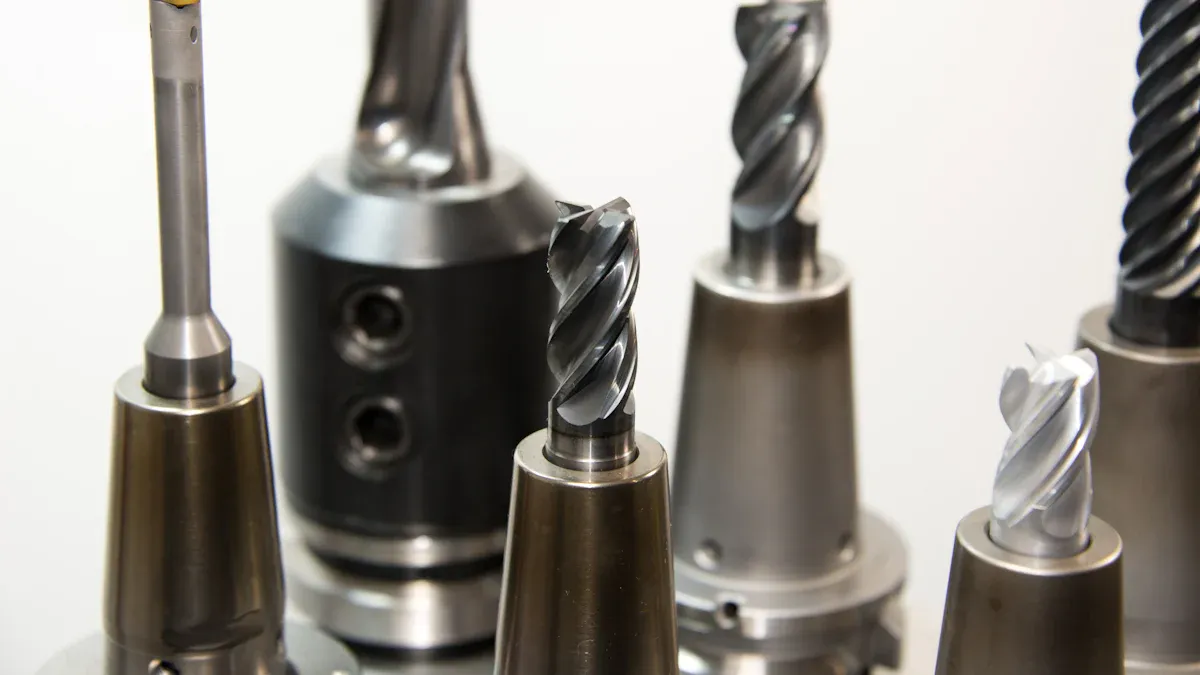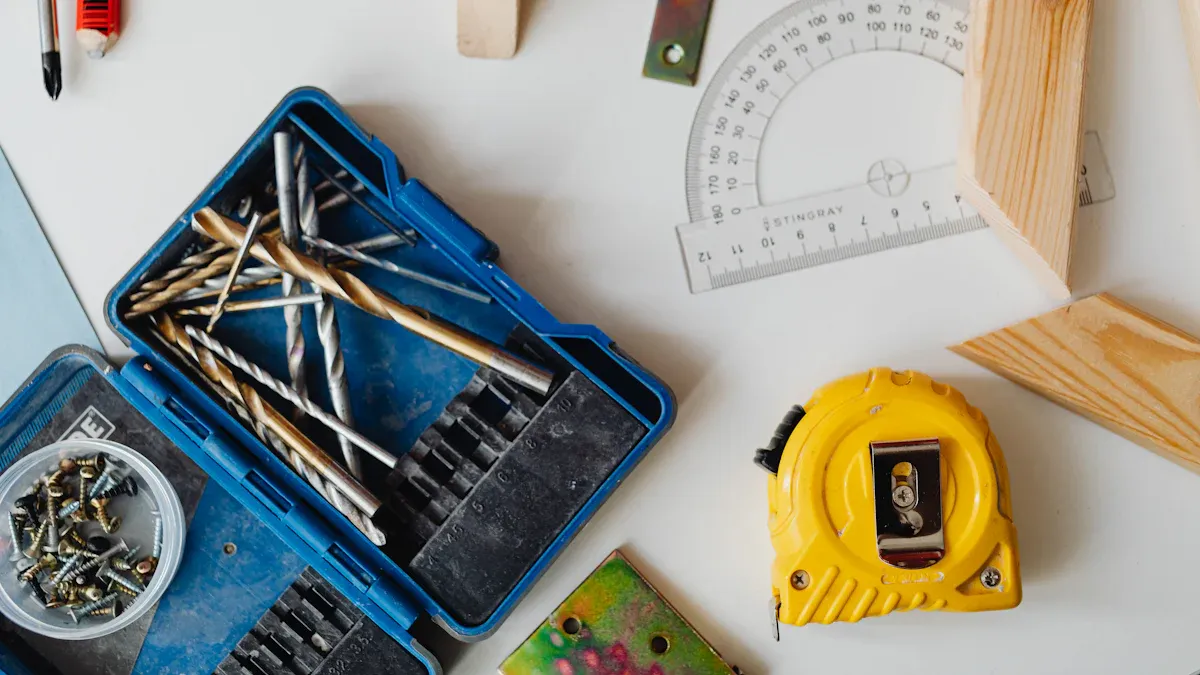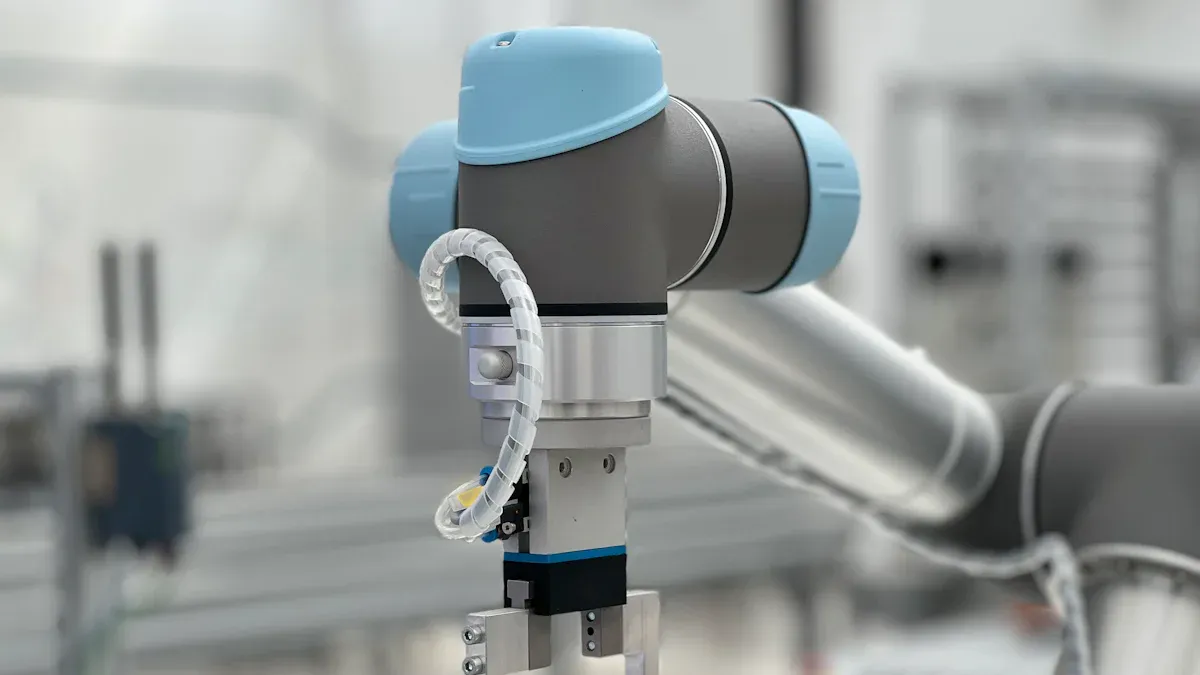
Every workspace has its own needs. Someone might use a Magnetic Tool to keep things tidy. Others rely on a Magnetic Retrieval Tool or Magnetic Pick Up for hard-to-reach items. Some choose a Magnet Fishing Kit for outdoor jobs. Magnetic Hanging Hooks help organize tools within reach.
Key Takeaways
- Match your tools to the right magnetic solution: use jars for small parts, strips for light tools, blocks or holders for heavy tools, and cable organizers for cords to keep your workspace tidy and efficient.
- Consider tool weight and how often you use each tool: strong magnets hold heavy tools safely, and daily-use tools should stay within easy reach to save time.
- Test magnetic tools in a small area first and combine different types if needed to find the best fit for your workspace and keep everything organized.
Main Types of Magnetic Tool Solutions

Magnetic Tool Holders
Magnetic Tool Holders help keep tools in one place. They work well for screwdrivers, pliers, and wrenches. Many people mount these holders on walls or workbenches. This makes it easy to grab a tool and put it back. In busy workshops, these holders save time and reduce clutter.
Magnetic Tool Strips
Magnetic Tool Strips offer a simple way to organize tools. Users attach the strip to a wall or cabinet. Then, they stick metal tools right onto the strip. This solution works best for lightweight tools. Many industries prefer strips because they are easy to install and move. Some strips use ferromagnetic particles, which are expected to hold over 42% of the magnetic particle market by 2025. This shows their popularity and usefulness.
Magnetic Tool Blocks
Magnetic Tool Blocks provide a sturdy base for heavier tools. Mechanics and woodworkers often use these blocks for hammers or large wrenches. The block sits on a bench or shelf. It keeps tools upright and easy to reach. Some blocks use dry-type magnetic separators, which are projected to hold a 65.4% market share in 2025. This high share shows their strong performance in tough environments.
Magnetic Tool Jars
Magnetic Tool Jars store small parts like screws, nuts, and bolts. The jar’s lid has a magnet that holds metal items in place. People can see what’s inside and grab what they need fast. These jars help prevent small parts from getting lost.
Magnetic Tool Cable Organizers
Magnetic Tool Cable Organizers keep cords and cables neat. They use magnets to hold cables in place on desks or walls. This solution works well in offices, workshops, and even kitchens. Many users like these organizers because they stop cables from tangling.
Step 1: Identify Your Tools and Storage Challenges
List Your Most-Used Tools
Every workspace has a few tools that see daily action. People often reach for the same screwdriver, wrench, or pair of pliers. Some use a tape measure or utility knife all the time. Others might grab a hammer or a set of drill bits. To get started, they should make a list of these go-to items. Writing down the most-used tools helps everyone see what needs to stay close at hand.
Tip: Walk through a typical project and note which tools get picked up first. This quick exercise can reveal which items deserve a prime spot on the bench or wall.
Note Storage Pain Points
After listing the main tools, it helps to think about storage problems. Some tools might always end up in a messy pile. Others could get lost in deep drawers or behind other gear. Heavy tools might not fit in small bins. Small parts like screws or bits can scatter everywhere. Cables and cords often tangle or fall behind the workbench.
People should ask themselves a few questions:
- Which tools are hard to find?
- Where does clutter build up?
- Do any tools get damaged from poor storage?
Spotting these pain points makes it easier to choose the right Magnetic Tool solution later. A clear view of the challenges leads to better organization and less frustration.
Step 2: Match Tool Types to Magnetic Tool Solutions
Choosing the right storage starts with knowing what kind of tools or items need organizing. Each tool type works best with a certain magnetic solution. Here’s how to match them up for a tidy and efficient workspace.
Small Tools and Parts
Small items like screws, drill bits, nuts, and even tiny screwdrivers can disappear fast. They slip into cracks or roll off benches. People often waste time searching for these parts. Magnetic Tool Jars and Magnetic Tool Strips help solve this problem.
- Magnetic Tool Jars: These jars keep small metal parts in one spot. The clear sides let users see what’s inside. The magnetic lid holds everything in place, even if someone bumps the jar.
- Magnetic Tool Strips: These strips work well for lightweight tools. Users can stick small screwdrivers, scissors, or tweezers right onto the strip. The tools stay visible and easy to grab.
Tip: Place jars or strips near the main work area. This way, small parts never stray far from the action.
Heavy or Bulky Tools
Big tools like hammers, pipe wrenches, or mallets need strong support. Regular strips might not hold them safely. For these, Magnetic Tool Blocks and heavy-duty Magnetic Tool Holders work best.
- Magnetic Tool Blocks: These blocks sit on benches or shelves. They have strong magnets that keep heavy tools upright. Mechanics and carpenters like these blocks because they can grab a tool with one hand and get back to work.
- Heavy-Duty Magnetic Tool Holders: These holders mount on walls or workbenches. They use powerful magnets to keep large tools from falling. Some holders have extra padding to protect tool handles.
Note: Always check the weight rating before hanging heavy tools. This keeps the workspace safe and prevents damage.
Cables and Accessories
Cords, chargers, and headphones can turn into a tangled mess. People often lose time untangling cables or searching for the right one. Magnetic Tool Cable Organizers make a big difference here.
- Magnetic Tool Cable Organizers: These organizers use magnets to hold cables in place. Users can attach them to desks, walls, or even the side of a toolbox. The magnets keep cords from slipping or falling behind furniture.
- Magnetic Clips: Some organizers come with magnetic clips. These clips snap around cables and stick to any metal surface. This keeps everything neat and easy to find.
Tip: Label each cable or accessory. This helps everyone grab the right cord without guessing.
Matching each tool type to the right magnetic solution saves time and keeps the workspace looking sharp. The right Magnetic Tool can turn a cluttered bench into an organized station.
Step 3: Consider Weight, Size, and Frequency of Use
Check Tool Weight and Magnet Strength
Not every magnet can hold every tool. Some tools weigh more than others. A heavy hammer needs a stronger magnet than a small screwdriver. People should check the weight of each tool before picking a magnetic holder or strip. Most products list their weight limits. If someone tries to hang a tool that is too heavy, it might fall and cause damage or injury.
Tip: Test the magnet with the tool before mounting it. If the magnet holds the tool firmly, it is a good match.
Some magnets use special materials like neodymium. These magnets hold more weight in a smaller size. Others use ceramic or ferrite, which work well for lighter tools. People should always match the magnet strength to the tool’s weight.
Think About Daily vs. Occasional Use
Some tools get used every day. Others only come out once in a while. Tools used daily should stay easy to reach. Magnetic strips or holders on the wall work well for these. People can grab what they need fast and put it back just as quickly.
For tools used less often, storage can be different. These tools might go in a drawer with a magnetic block or in a jar. This keeps the workspace clear for the most important items.
- Daily tools: Place them in the open and within arm’s reach.
- Occasional tools: Store them safely but out of the way.
Choosing the right spot for each tool saves time and keeps the workspace neat.
Step 4: Evaluate Magnetic Tool Installation Options

Wall-Mounted Magnetic Tool Solutions
Wall-mounted options work well for people who want to save space. They attach directly to walls, pegboards, or even the side of a workbench. Many choose these solutions for garages or workshops. Wall-mounted strips and holders keep tools visible and easy to grab. People can arrange tools by size or type. This setup helps everyone find what they need fast.
Tip: Place wall-mounted holders at eye level. This makes it easier to reach tools without stretching or bending.
Drawer and Cabinet Magnetic Tool Options
Some people prefer to keep tools out of sight. Drawer and cabinet solutions work best for this. Magnetic strips or pads fit inside drawers or cabinets. They hold tools in place, so nothing slides around. This method protects sharp edges and keeps tools organized. It also works well for shared spaces where people want a clean look.
- Drawer strips: Great for screwdrivers, pliers, or small wrenches.
- Cabinet pads: Useful for keeping sockets or bits in order.
Freestanding Magnetic Tool Blocks
Freestanding blocks offer flexibility. People can move them around the workspace as needed. These blocks sit on benches, shelves, or carts. They hold heavy tools upright and ready for use. Freestanding options suit those who change their setup often or need a portable Magnetic Tool solution.
Note: Freestanding blocks work best on flat, stable surfaces.
Step 5: Choose Magnet Strength, Material, and Style
Assess Magnet Grades and Materials
Choosing the right magnet for a Magnetic Tool can make a big difference in how well it works. Not all magnets are the same. Some are much stronger than others. Here are some key points to consider:
- Neodymium (NdFeB) and Samarium Cobalt (SmCo) magnets are the strongest rare earth magnets. Neodymium magnets have higher maximum energy product values (30-55 MGOe) than Samarium Cobalt (16-32 MGOe), so they hold tools more tightly.
- Magnet coercivity, shown by letters like M, H, SH, UH, EH, and TH, tells how well a magnet resists losing its strength, especially when it gets hot or faces other magnets.
- Stronger magnets sometimes have lower resistance to heat, so users need to balance strength and stability.
- The size and shape of the magnet also matter. Bigger or specially shaped magnets can hold more weight or work better in certain spaces.
- Higher grades and stronger magnets usually cost more.
- The workspace environment, such as temperature and nearby materials, affects which magnet works best.
A study from ScienceDirect shows that the shape of the magnet, like flat or curved, changes how the magnetic field spreads out. This can affect how well a tool works, especially for jobs that need a smooth finish.
Pick a Style That Fits Your Space
Style matters when picking a Magnetic Tool. Some people like a modern look, while others want something simple. The right style can make a workspace feel more organized and even more fun to use.
Tip: Look at the colors, shapes, and finishes of different magnetic holders. Pick one that matches the rest of the workspace.
Some magnetic holders come in bright colors to help tools stand out. Others use sleek metal or wood finishes for a classic look. People should also think about how much space they have. A slim strip fits well in tight spots. A large block works better on a big workbench. Choosing the right style helps tools stay organized and easy to find.
Practical Tips for Selecting a Magnetic Tool
Test with a Small Area First
Trying out a Magnetic Tool in a small part of the workspace can save time and money. Many experts test new tools in one spot before making big changes. This step helps people see if the tool fits their needs. For example, teams working with magnetometers often start with a small test area. They use this method in fields like archaeology, marine surveys, and even when searching for hidden objects underground. These tests help them pick the right sensors and settings before they use the tools everywhere.
Tip: Place a magnetic holder or strip in a corner of the bench. Watch how well it holds tools and if it makes work easier. If it works well, expand to other areas.
Testing first helps avoid mistakes. It also shows which tools work best with magnets and which do not.
Combine Multiple Magnetic Tool Solutions if Needed
No single solution fits every workspace. Some people use strips for screwdrivers and holders for hammers. Others add jars for small parts or cable organizers for cords. Mixing different types can solve more problems and keep things tidy.
- Use strips for light tools.
- Pick blocks or holders for heavy items.
- Try jars for screws and bits.
- Add cable organizers for cords.
Note: Combining solutions helps everyone find the right tool fast. It also keeps the workspace safe and organized.
Choosing the right mix makes the most of every inch of space.
Quick Comparison Chart: Magnetic Tool Types vs. Applications
Overview of Tool Types and Best Magnetic Tool Solutions
Choosing the right Magnetic Tool can feel tricky. Some people have lots of small parts, while others need to store heavy tools. This chart helps everyone see which solution fits each tool type best.
| Tool Type | Best Magnetic Tool Solution | Why It Works Well |
|---|---|---|
| Small Parts (screws, bits) | Magnetic Tool Jars | Keeps tiny items together and visible |
| Lightweight Hand Tools | Magnetic Tool Strips | Easy to grab and put back |
| Heavy or Bulky Tools | Magnetic Tool Blocks or Holders | Strong magnets hold big tools securely |
| Cables and Chargers | Magnetic Tool Cable Organizers | Stops cords from tangling or slipping |
| Mixed Tool Sets | Combine Strips, Blocks, and Jars | Handles different sizes and shapes |
Tip: People can mix and match solutions for the best results. For example, they might use a strip for screwdrivers and a jar for screws.
Some users like to test one area first. Others jump in and organize the whole bench. The right Magnetic Tool makes any workspace safer and more organized. People should look at their tools and pick the solution that matches their needs.
Everyone should take a moment to look at their workspace. They can spot what needs better storage. Starting with one Magnetic Tool makes organizing easier. Over time, adding more solutions can help. A tidy space helps people work faster and feel less stressed.
FAQ
How does someone clean a magnetic tool holder?
A person can wipe the holder with a damp cloth. For sticky spots, they use mild soap. Dry it well to keep the magnet strong.
Can magnetic tool solutions damage electronic devices?
Magnets can affect some electronics. Keep magnetic tool holders away from phones, tablets, or computers. Store tools and electronics in separate areas for safety.
What if a tool does not stick to the magnet?
Some tools use non-magnetic metals like aluminum or plastic. Only steel or iron tools will stick. Try a different storage method for those items.
Post time: Jun-18-2025
